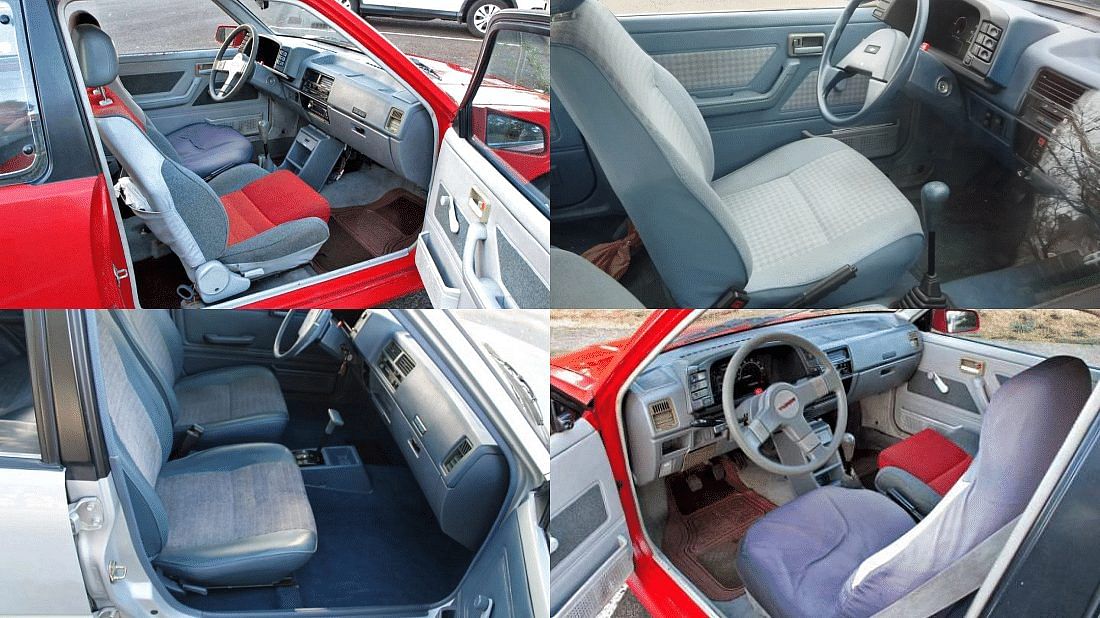Chevy Sprint Sits In The Center Of the 80s Hot Hatch Legacy
One can name a lot of famous automobiles from the late 80s but the Chevy Sprint often fails to make the list. But it’s not like it was not a good enough car, in fact, the Sprint was the heart of the hot hatch legacy. Offering a great fuel economy in the midst of rising gas prices and instability in the economy, the Chvey hatchback was a true hero.
Published August 1, 2024

The Chevrolet Sprint was originally a GM project called the M-Car. Originally meant to be a small economy car, the Sprint was abandoned by GM as the authority failed to see a bright future. The project was transferred to Suzuki, who finished it in exchange for a stake in the company.
The Sprint was a relatively conventional car, but it had one odd detail: the hood latch, we will touch on that later. It was a small, black rectangle that was located in the center of the hood. Although nobody is certain about the motive of such a distinct aspect, it did become one of the most distinctive features of the Sprint.
1. Different names same car
The Chevrolet Sprint was a rebadged version of the Suzuki Cultus, a small car that was sold in Japan and other parts of the world. General Motors, which earlier abandoned the project, saw an opportunity to bring the Cultus to the United States, where it could compete with other compact cars like the Toyota Tercel and Hyundai Excel.
The first-generation Cultus was sold in the U.S. as the Chevrolet Sprint, and it was available in both three and five-door hatchback body styles. Moreover, What Chevrolet called the Sprint was also called Suzuki Swift, Holden Barina, Pontiac Firefly, Suzuki Forsa, and Suzuki Khyber, depending on what market the Brand targeted and possibly the position of the stars in the night sky.
2. Just the right power?

Powered by a 1.0L inline-3 engine, the Chevrolet Sprint does not seem like a good choice from today’s perspective. In fact, 49 horsepower and 57 lb-ft of torque output do seem low. But it was still enough to propel the lightweight hatchback that offered incredible fuel economy. In fact, the EPA rated the 1986 Chevrolet Sprint at 53 miles per gallon on the highway, making it one of the most fuel-efficient cars on the market at the time.
3. Nothing special about the Interior
The interior had soft material seats, a hard plastic grey dashboard, and door inserts with grainy leather touches. The buttons and functions were placed behind the steering wheel, which was uncommon at the time but made it very convenient.

Overall, the Chevrolet Sprint was a basic car in terms of design. As an 80s car, it had minimal and straightforward technology and design. Chevrolet released the 1985 Sprint in a variety of colors. Red was the most popular color, but seven other colors were also available, including blue, silver, black, and white.
4. Innovative Styling
The practicality of the Chevrolet Sprint was not limited to its fuel efficiency as it had a distinctive design that set it apart from other cars of its era. Starting with the boxy shape and complemented by a tall roofline ensured a unique look. At the same time, the smaller stature made it easier to maneuver in tight spaces. It is obvious that people might still expect more and there are critics who termed the Sprint as unattractive. However, the Chevy was still a very attractive and economic car that came with important standard features like a rear window defroster, intermittent wipers, and a digital clock making it an easy choice from its time.
5. Weird Black Rectangle
A comical little rectangle appears right front and center on the hood, supposed to act as the secondary hood latch. On the Suzuki counterparts of Sprint, the latch was combined with a Suzuki badge, so it had a bit of a branding function as well. On the Chevy, it was just a black rectangle.
But why? Why would you want to put additional effort to design a secondary system to open the hood just to make your car look even uglier? The mystery still remains to this date, as we find no practical purpose for the misplaced rectangular artifact on the hood of the Chevy Sprint.
6. Price and Competition
The Chevrolet Sprint was a cheap thrill! In 1986, you could get your hands on a three-door hatchback for just $5,380. That's right, five thousand three hundred eighty dollars. And if you wanted the five-door model, it would only set you back $5,580. Of course, the Sprint wasn't the only affordable car on the market at the time. It had to compete with other budget-friendly models like the Yugo GV and Hyundai Excel.
Despite its affordable price, the Chevrolet Sprint came standard with features that were not typically found in other entry-level cars. For example, it had a five-speed manual transmission, which was not always standard on budget cars. An automatic transmission was available as an option.
7. The 87 Sprint Turbo
The Chevrolet Sprint Turbo is powered by a turbocharged and inter-cooled version of the 1.0L inline three-cylinder engine that is found in the regular Sprint. This gives the Turbo a mighty 70 horsepower and 79 lb-ft of torque, which is 25 percent more than the normally aspirated motor. The power is sent to the front wheels via a five-speed manual transmission.

Chevrolet Sprint Turbo was tested when it was new and clocked a 0-60 time of 9.5 seconds. This was impressive for an 80s hatchback with 70 horses. The car was praised for its acceleration, styling, and brakes, but found the torque steer and handling to be underwhelming.
8. 24 hours of Lemons
The 24 Hours of Lemons is a series of endurance races held on paved road race courses across the United States. The series holds the Guinness World Record for the "Most participants in one race" (216 cars).
The name of the race series is a play on words alluding to both the long-running annual 24 Hours of Le Mans sports car race in Le Mans, France, and the notion of "lemon" cars. Believe it or not, The Chevrolet Sprint Turbo raced in the 2012 24hrs of Lemons where it failed miserably.

The Chevy Sprint may be long gone, but its impact on the automotive industry will never be forgotten. This pioneer of the compact car segment helped to shape the cars we drive today. So if you see one, take a moment to appreciate its history.
Write a comment
Comments
No Comments Yet









